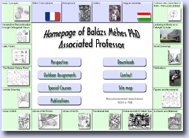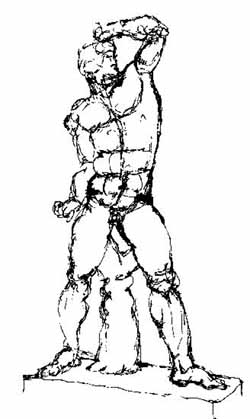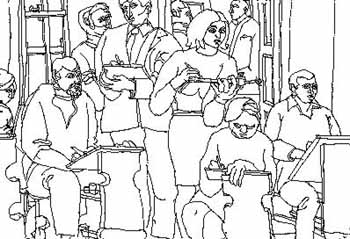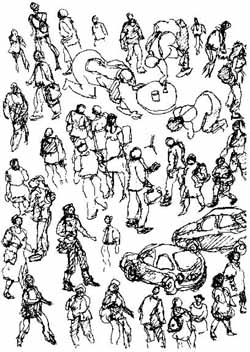

Perspective
Constructions
Outdoor Assignments
Special Courses
¤ Surfaces and Materials
¤ Figures and Movements
Publications
FIGURES AND MOVEMENTS A Gallery of Additional Tools for Perspective Views (Course Syllabi for fourth-year students in Architecture) |
||
Course Syllabi |
||
|
||
15. Eligible home works: a) Human body studies: face and hand expressions, face details or: b) Building scuplture and similar details |
||
Summary |
||
The perspective view revives if it contains scenes relating to the building's function. We may choose characteristic figures and tools to each purpose. These scenes (living pictures) are made of objects and figures waiting for being fit into their designed environment. After having roughly learned through indoor plaster studies the main proportions of the human face and body, we shall practise the technique of "quick-drawing" via croquies. We may assemble moving people ( arriving e. g on escalator) with the help of repeting details observed on different subjects. Thus the basic figure of the crowd may be put together of parts of diverse people constantly getting into the same position. Our technical goal is to present linearily different scenes. |
||
| Formule: |
||
Figure + Movement + Tools + Site = a typical Scene |
||
| General Menu |
||
|
||
© All rights reserved Associated Professor Balazs Mehes PhD recommended resolution 1024×768 |
||


